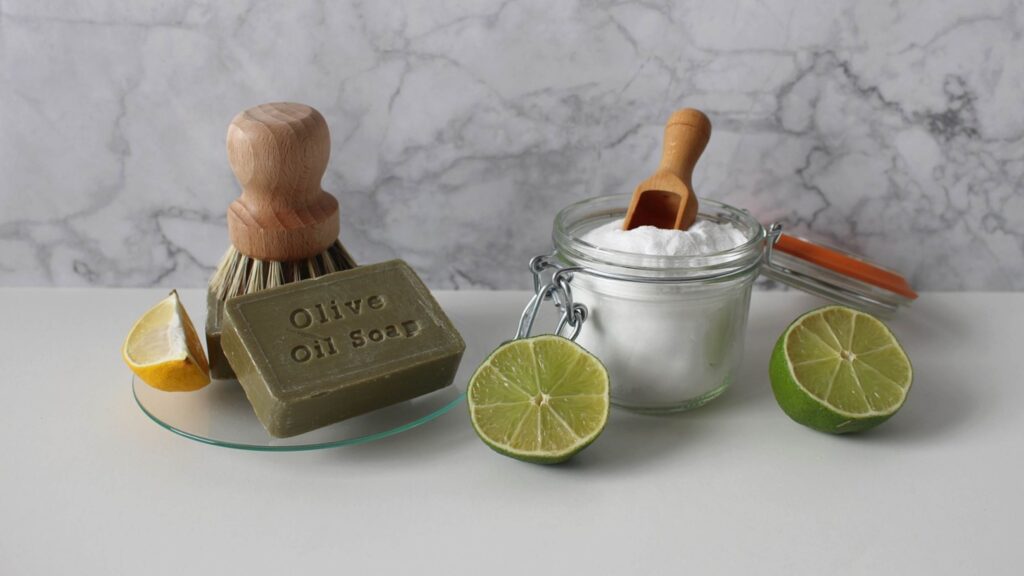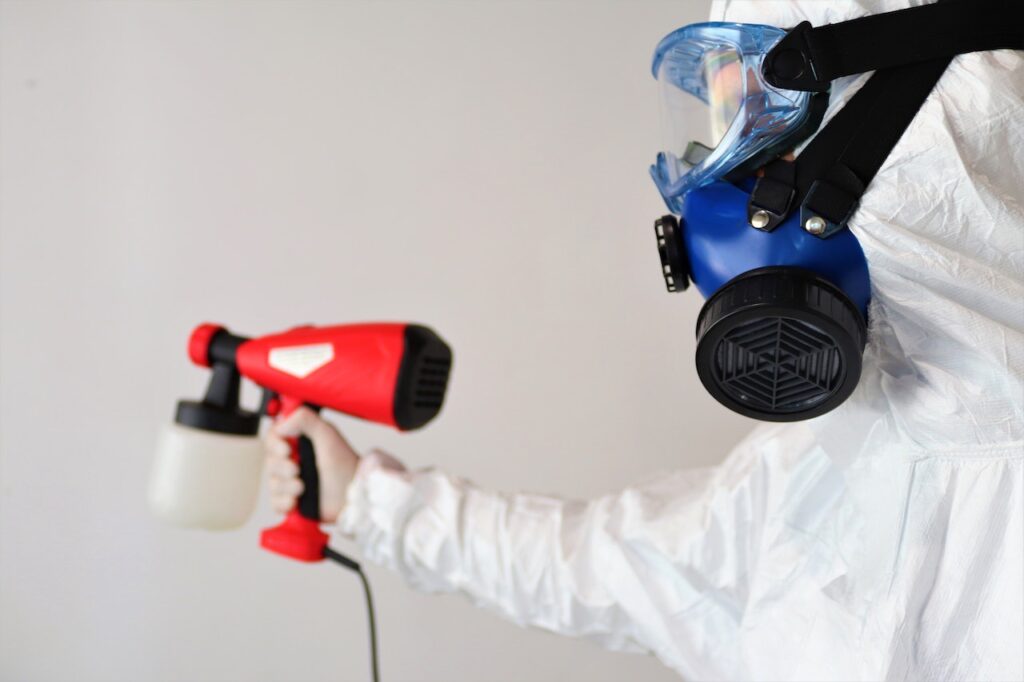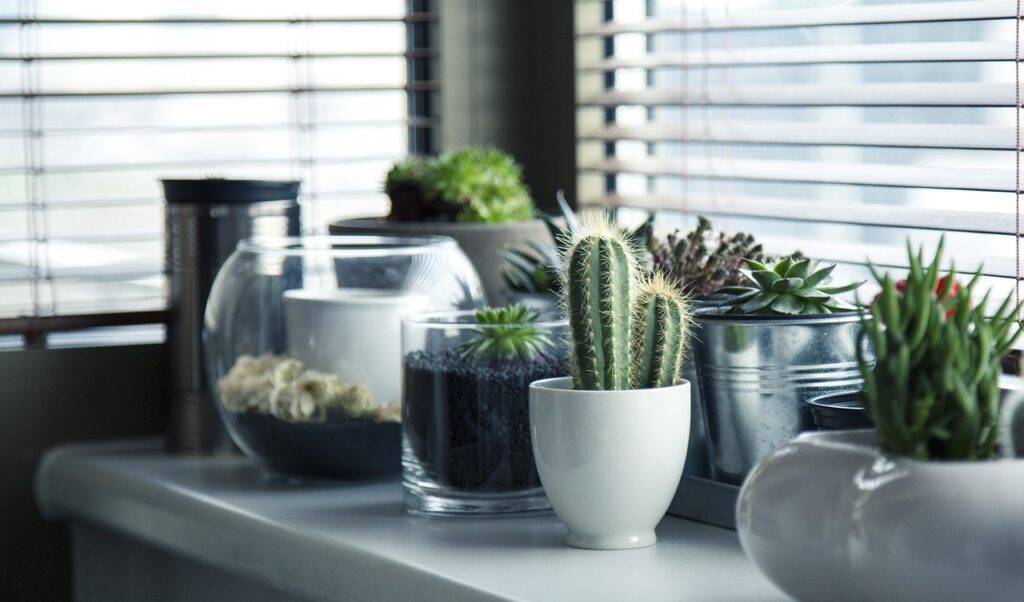We all want our family members to be healthy and happy. We do our best to provide them with nutritious food, a safe place to live, and a loving environment. However, have you ever considered the impact of your home’s physical environment on your health? There are several research which show a direct correlation between a healthy home environment and maintaining human health. So, what can we do to ensure that our home environment is safe and healthy for our family?
1. Keep Your Home Clean and Organized

Keeping homes neat and clean is not only a matter of aesthetics but also essential for maintaining good health and well-being. In a recent study published in the Social Science Research Journal, crowded, inadequate, and disorganized home environments significantly impact sleep habits and increase inflammation. Additionally, environmental toxins such as dust, noise, mould, and lead paint found in the air, walls, and floors of a home are detrimental to physical health and behavioural outcomes.
Therefore, regular cleaning and decluttering can help to reduce the amount of dust and other allergens in your home. Indoor allergens are a significant contributor to allergic diseases and asthma, affecting 300 million people worldwide.
Pathogens like fungi, bacteria and viruses can survive on surfaces for varying durations. Regular cleaning and disinfection can prevent the spread of infectious diseases within households.
In addition, a clean and organized environment can promote mental well-being. It can also help reduce stress and promote better sleep habits. A study published in the Personality and Social Psychology Bulletin found that women who described their homes as cluttered had higher cortisol levels (a stress hormone) than those who perceived their homes as tidy. Therefore, maintaining a healthy environment at home is highly crucial for better health.
2. Maintain Proper Ventilation

Maintaining proper ventilation at home is essential to improve human health, comfort, and well-being. The indoor air can be two to five times more polluted than outdoor air. Therefore, proper ventilation can dilute indoor pollutants such as volatile organic compounds, allergens, and particles and lead to improved indoor air quality. To improve the air quality open windows and doors when possible, and use exhaust fans in the kitchen and bathroom.
Ventilation can also help to regulate indoor temperatures, preventing excessive heat or cold, which can impact comfort and health. In addition, good ventilation can lead to improved cognitive function, concentration, and decision-making, as it ensures a constant supply of oxygen to the brain.
3. Use Non-Toxic Cleaning Products

Traditional cleaning products often contain harmful chemicals that can pose health risks when inhaled, ingested, or absorbed through the skin. On the other hand, non-toxic cleaning products are becoming increasingly popular due to their effectiveness in cleaning while minimizing health and environmental risks associated with traditional, toxic cleaning products. Here are some examples of non-toxic cleaning products commonly found at home:
- Baking Soda (Sodium Bicarbonate): Baking soda is a versatile cleaning agent. It can be used to clean surfaces, remove stains, and deodorize areas such as refrigerators. At the same time, it is non-toxic, biodegradable, and abrasive enough to scrub surfaces without causing damage. It also has natural deodorizing properties.
- White Vinegar: White vinegar can be used to remove mineral deposits, dissolve grease, and clean glass surfaces. It is a natural disinfectant and can help to eliminate bacteria and germs. It is also eco-friendly and readily available.
- Castile Soap: Castile soap is a gentle, plant-based soap that can be used for various cleaning purposes, including as a hand soap, dishwashing liquid, or floor cleaner. It is biodegradable and free of harmful chemicals.
- Lemon Juice: Lemon juice is an excellent natural degreaser and can be used to clean cutting boards, remove stains, and freshen up surfaces. Lemon juice contains citric acid, which has natural antibacterial and antiseptic properties. It also provides a pleasant, fresh scent.
- Hydrogen Peroxide: Hydrogen peroxide can be used as a disinfectant for countertops and bathroom surfaces. Hydrogen peroxide breaks down into water and oxygen, making it a safe and eco-friendly disinfectant. It can also help to remove mould and mildew.
- Essential Oils: Essential oils like tea tree oil or lavender oil can be added to cleaning solutions for their pleasant scents and antibacterial properties. It has a natural fragrance and offers mild disinfection.
4. Check for Hazards

Make sure your home is free of hazards that could cause injury, such as loose rugs, exposed wires, and sharp objects. Home fires and burns can result in severe injuries and fatalities mainly due to faulty wiring and cooking equipment. Electrical-related accidents and fires are reported globally, contributing to property damage, injuries, and even fatalities. Therefore, maintaining a healthy environment at home is highly crucial for better health.
In addition, unintentional poisoning at home with household cleaning products, medications, and carbon monoxide can increase the risk. CO poisoning is a global concern due to incomplete combustion because of faulty heating systems or appliances. In addition, carbon monoxide could be one reason for nightmares. As per the WHO report, about 90% of poisonings occur at home and is a top cause of death worldwide. Therefore, careful handling and storage of these products at home can minimize the impact.
5. Reduce Noise Levels

Exposure to noise pollution can indeed have detrimental effects on human health, while silence or reduced noise levels can promote better health and well-being. As per a recent study, every 10-decibel increase in nighttime noise exposure may have a 27% higher risk of developing coronary artery disease. Excess noise triggers the body’s stress response, leading to the release of stress hormones like cortisol and adrenaline. This can contribute to high blood pressure, increased heart rate, and ultimately heart problems.
Moreover, excessive noise can disrupt sleep patterns, leading to sleep deprivation and its associated health problems. Noise-induced sleep disturbances can lead to fatigue, reduced cognitive function, and increased risk of accidents. Therefore, maintaining a healthy environment at home is highly crucial for better mental health.
Noise pollution can also have psychological effects, including increased stress, anxiety, and even depression. Chronic noise exposure can disrupt the body’s stress-regulating systems, leading to psychological distress.
Based on the available scientific evidence, it is clear that excessive noise can have a detrimental impact on health, including cardiovascular problems, sleep disturbances, and psychological issues. In contrast, silence or reduced noise levels can provide numerous health benefits, including stress reduction, improved sleep quality, and enhanced cognitive function.
To mitigate the negative effects of noise pollution, urban planners and policymakers should consider noise-reduction measures such as sound barriers, better city planning, and noise ordinances. Additionally, individuals can take steps to protect themselves from noise pollution by using earplugs, and noise-cancelling headphones, seeking out quieter environments or using noise-reducing curtains or rugs, and avoiding loud activities during naptime and bedtime.
6. Regular Pest Control

Pest control at home can significantly contribute to improving human health by reducing the risks associated with pests and the diseases they carry. For example, insecticide-treated bed nets and indoor residual spraying significantly reduce the transmission of vector-borne diseases such as Malaria. According to the WHO, the use of insecticide-treated nets has led to a 50% decrease in malaria cases in sub-Saharan Africa between 2000 and 2015.
Moreover, regular pest control helps in preventing allergies and respiratory issues. Pest infestations, particularly cockroaches and rodents, contribute to indoor allergen exposure, which can exacerbate allergies and respiratory problems. The American Lung Association reports that more than 50 million Americans suffer from allergies, with indoor allergens being a significant contributor.
In addition, regular pest control can significantly minimize foodborne illnesses. According to WHO estimates, more than 600 million people get sick and about 0.4 million die every year due to foodborne diseases. Therefore, maintaining a healthy environment at home is highly crucial for minimizing foodborne illnesses.
In addition to health improvement, regular pest control can significantly minimize structural damage and injury. According to the National Pest Management Association, about $5 billion loss is estimated due to structural damage only because of termites. Therefore, pest control can be highly beneficial both in terms of economics and health if it’s on a regular basis.
7. Control Moisture

Indoor moisture levels can have a profound impact on health, influencing respiratory conditions, skin health, susceptibility to heat-related illnesses, the growth of harmful microorganisms, and the prevalence of vector-borne diseases. It’s essential to maintain an appropriate level of indoor humidity and take preventive measures to mitigate potential health risks associated with moisture-related issues. Therefore, maintaining moisture content in the home environment is highly crucial for a healthy family.
Adequate ventilation or by addressing leaks promptly, dehumidifiers, and ensuring proper drainage around your home helps to control indoor humidity levels. Lower humidity reduces the risk of mould and mildew growth.
8. Maintain Safe and Pleasant Drinking Water

Test your tap water for contaminants and install filters if necessary. Ensure your plumbing system is well-maintained to prevent lead or other contaminants from entering the water supply.
If you suspect bacterial contamination in your water, you can boil it to make it safe for consumption. Boil water vigorously for at least two minutes to kill most harmful bacteria and parasites.
Store water in food-grade, BPA-free containers to prevent leaching of harmful chemicals into the water. Stainless steel, glass, and high-quality plastic containers are good options.
Consider installing a water filtration system to remove common contaminants like chlorine, lead, sediment, and other impurities. The type of filter you need depends on your specific water quality issues. Popular options include activated carbon filters, reverse osmosis systems, and UV purifiers. Choose a system that suits your water source and needs.
Remember that water quality can vary significantly depending on your location, so it’s essential to tailor your approach to the specific conditions in your area. Regular testing and maintenance are key to ensuring that your drinking water remains safe and pleasant for consumption.
9. Reduced Clutter

Keep your living spaces organized and free from clutter. Clutter can collect dust and make cleaning more challenging. Remember reducing clutter is an ongoing process, and it may take time to achieve and maintain a clutter-free home. However, the benefits to your physical and mental health, including reduced stress and increased overall well-being, make the effort worthwhile. Key strategies to reduce clutter are as follows:
- Declutter by Category: Sort items by category rather than by location. This helps you see the full extent of your belongings and prevents duplication.
- Use the “Keep, Donate, Discard” Method: For each item, decide whether to keep it, donate or sell it, or discard it. Be honest about what you genuinely need or love and what you can live without.
- Adopt the “one in, one out” rule: When you acquire a new item, commit to getting rid of an old one. This helps maintain a balanced and clutter-free environment.
- Don’t forget about digital clutter: Organize your digital files, unsubscribe from unnecessary emails, and delete unused apps and files on your devices.
- Declutter Regularly: Set aside time each week or month to review your belongings and maintain a clutter-free space.
- Storage Solutions: Invest in storage solutions such as shelves, cabinets, and bins to keep items organized and out of sight. Proper storage can help maintain a clutter-free appearance.
- Consider Sentimental Items: Keep a few meaningful items and take photos of the rest to preserve memories without physical clutter.
- Donate and Recycle Responsibly: Ensure that items you choose to donate or recycle are in good condition and suitable for reuse.
- Mindful Consumption: Going forward, adopt a more mindful approach to consumption. Before purchasing new items, ask yourself if you truly need them and if they will add value to your life.
10. Maximize Natural Light

Maximizing natural light in your home can have several health benefits. Sunlight provides various health benefits, including mood improvement and vitamin D synthesis. Arrange your furniture thoughtfully by placing it near windows to make the most of natural light. Opt for light-coloured decor and avoid heavy curtains to allow light to filter through. Mirrors can reflect and amplify natural light, making spaces feel brighter and more open. Ensure your windows are clean to allow maximum light to enter your home.
Trim any vegetation outside your windows that may block sunlight. Choose materials that transmit light, like frosted glass or acrylic furniture. Consider installing skylights or light tunnels to bring in additional daylight. Make a habit of opening window coverings during the day, even on cloudy days.
Use task-specific lighting for focused tasks like reading or cooking. Open floor plans can allow natural light to flow more freely. Select light-reflective flooring materials to enhance natural light. Prioritize sleep health by allowing ample natural light in your bedroom during the day and keeping it dark at night. By following these tips, you can create a healthier and brighter living environment.
11. Keep Indoor Plants

Incorporate indoor plants, as they can improve indoor air quality by removing certain pollutants and adding oxygen to the air. In addition, it can reduce stress and enhance overall well-being. Here are strategies for keeping indoor plants to maximize their health benefits:
- Choose the Right Plants: Select indoor plants that thrive in the conditions of your home, considering factors like light levels, humidity, and available space. Common options include snake plants, pothos, and peace lilies.
- Provide Adequate Light: Place your plants where they can receive the right amount of light. Some need direct sunlight, while others thrive in low-light conditions. Rotate them periodically to ensure even growth.
- Water Carefully: Overwatering is a common mistake. Water your plants when the top inch or two of soil feels dry, but avoid letting them sit in standing water. Use a saucer to catch excess water.
- Monitor Humidity: Some plants, like ferns and orchids, require higher humidity levels. Consider using a humidity tray or a room humidifier to create the ideal environment.
- Fertilize Sparingly: Use a balanced, water-soluble fertilizer during the growing season (spring and summer) but follow package instructions and avoid over-fertilizing, which can harm the plants.
- Prune and Trim: Regularly trim dead or yellowing leaves to encourage new growth. Pruning can help maintain the plant’s shape and health.
- Support Growth: Provide appropriate support for climbing or vining plants, such as trellises or stakes. This ensures they grow correctly and look appealing.
- Observe Your Plants: Pay attention to your plants’ behaviour and adjust care as needed. Each plant has unique requirements, and learning to read their signals is crucial.
- Enjoy the Benefits: Beyond their health benefits, indoor plants can improve your mood and aesthetics. Take time to appreciate and care for them as part of your daily routine.
Conclusion
The above strategies and safety guidelines followed at home are essential for improving human health by reducing the transmission of vector-borne diseases, preventing allergies and respiratory issues, mitigating foodborne illnesses, and minimizing structural damage and injury. Indeed, maintaining the environment at home is highly crucial for a healthy life. Therefore, by taking these simple steps, we can help ensure that our home environment is safe and healthy for our family members. Let’s do our best to provide them with the best possible home environment!

